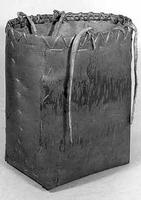Okanagan First Nation
OKANAGAN () First Nation are an Interior Salish people (see SALISHAN FIRST NATIONS) who inhabit the OKANAGAN VALLEY south to the confluence of the Okanagan and COLUMBIA rivers in Washington state. Before contact with Europeans their territory extended from SLOCAN LK on the east to the NICOLA valley in the west. The Okanagan language is still spoken by a few hundred people (see FIRST NATIONS LANGUAGES). Traditionally the Okanagan inhabited villages that were grouped into loose confederacies, or bands, associated with particular territories. At contact there were 7 such confederacies and an estimated population of 12,000. The people occupied their villages during the winter when they engaged in ceremonies, feasting and other social and religious activities. Winter lodges called kekuli were partly sunk in the ground (see ARCHITECTURE, ABORIGINAL). From spring to fall the people dispersed for hunting, gathering and FISHING. Bands had chiefs, or headmen, who enjoyed limited authority. Lesser chiefs might lead war or hunting parties, and religious leaders had some authority as well. Social rank was maintained by wealth, marriage and personal accomplishment, not simply heredity. Warfare between the Okanagan and their neighbours was common, as was trade. Horses were introduced from the south early in the 18th century and the development of an equestrian culture distinguished the Okanagan. The FUR TRADE began in the valley in 1812 from Forts Okanogan and Kamloops. It led to the depletion of food resources and instances of hostility toward traders. The trade was waning by 1858 when the GOLD RUSH on the FRASER R sparked an influx of miners. The rush also attracted settlers who remained to farm and raise cattle (see AGRICULTURE; CATTLE INDUSTRY). In the 1860s and 1870s RESERVES were set aside for the people. By the end of the century the Okanagan were involved increasingly in farming, LOGGING, ranching and wage labour, though discrimination by whites frustrated their attempts to integrate into settler society. Today most people earn their living from wage labour. There are about 4,000 Canadian Okanagan, in 7 bands: the Upper Nicola near MERRITT, the Okanagan near VERNON, the Westbank near KELOWNA, the Penticton, the Upper Similkameen and the Lower Similkameen near KEREMEOS, and the Osoyoos (Inkameep).

